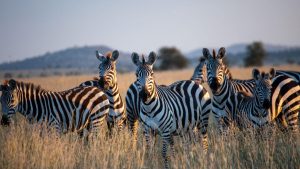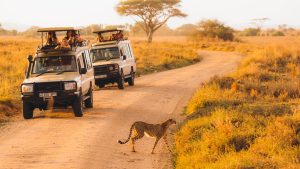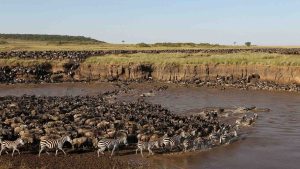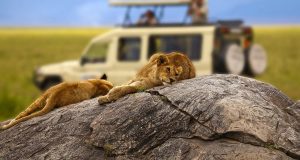Quick Facts
About Mikumi National Park
Peak Time
June - October
Best Time To Go
Year-Round
Famous For
Wildlife viewing near Dar es Salaam
Home Of
Elephants, lions, giraffes, zebras, and over 400 bird species
Overview
Mikumi National Park is bordered to the south by Selous Game Reserve, the two areas forming a unique ecosystem. The vegetation of this area consists of savannah dotted with acacia, baobab, tamarinds, and some rare palm.
Mikumi national park is Tanzania’s fourth-biggest national park. It’s additionally the most open from Dar es Salaam. With confirmed wild life sightings, it makes a perfect safari goal for those who are busy and have less time to travel, two days or more can get you an opportunity to explore the splendor of mikumi national park
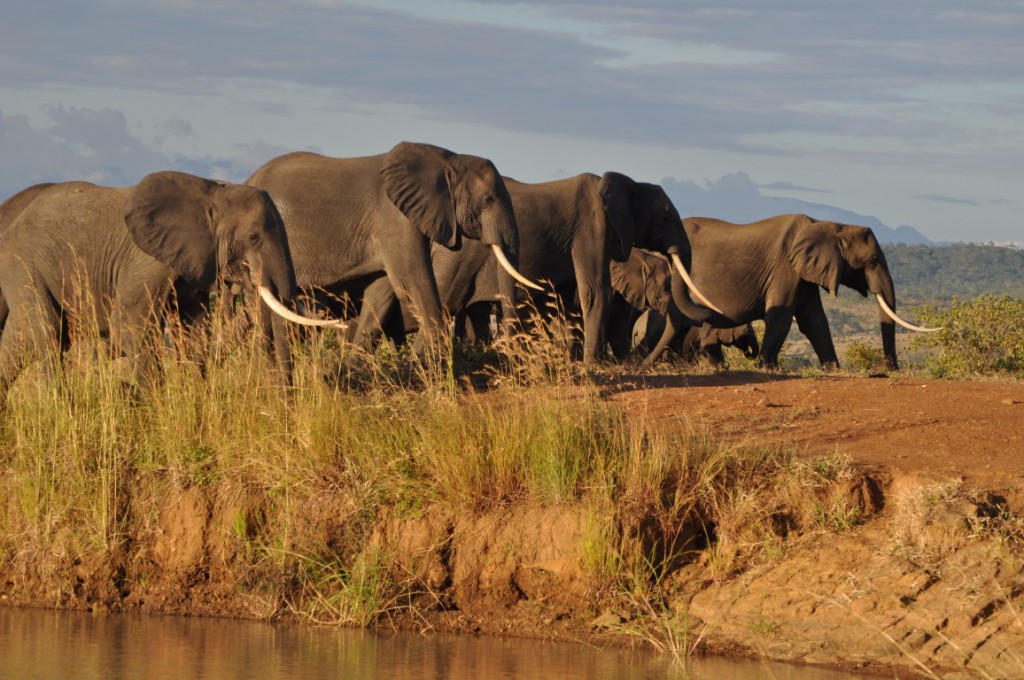
Wildlife
Nicknamed as little Serengeti national park is Mikumi national park, its rich with a wide range of wildlife. The park hosts large number of the big game that covers four members of African bi five only missing Rhinos. Mikumi is a home of large herds of Elephants, Buffaloes, Zebras, wildebeest, hyenas, Leopards, Lions, Sable Antelopes, Great Kudu, and many more. The chances of seeing tree climbing lions in Mikumi national park are higher than in the famous tree climbing lions home that is Lake Manyara national park.
Mkata Floodplain
Birds is one of the key Attractions in Mikumi national park, the park has over 400 bird species with both permanent habitats and migratory birds. This large number of birds has made the park one of the birding destinations in the Southern part of Tanzania. The long lists of birds can be achieved with patient Mikumi national park safaris that last beyond 3 days. However much the size of the park is not all that very big but the diversity of the ecosystem and the vegetation has attracted different bird species. The most sighted birds are: Black billied bustard, Secretary bird, Guinea fowl, Ox peckers, Bateleur eagles, cattle egret.
Scenic Landscapes
Mikumi national park is situated in the middle of mountains hence making mountains some of the key Attractions in Mikumi national park. The scenic views of the mountains that have unique formation system attracts more guests especially writers, photographers and researchers to the park. The most common and famous mountains are Uluguru mountains that every guests wants to try to hike during their safari to Mikumi national park. Other mountains around the park include: Udzugwa Mountains, Malundwe Mountains which is the largest and the highest mountain. Its found in the center of the national park connecting Uluguru mountains with Udzungwa mountains and Uvidunda. Malundwe Mountains is consist of three peaks with the highest peak found on the Southern part reaching up to 1290 meters.
Activities
Mikumi National Park provides a range of thrilling activities, making it a fantastic spot for both avid wildlife lovers and casual travelers:
- Game Drives: Venture through the park on guided game drives, offering chances to see elephants, lions, giraffes, and more, particularly in the wildlife-abundant Mkata Floodplain.
- Walking Safaris: Discover the park on foot during a walking safari, where knowledgeable guides highlight the ecosystem’s smaller marvels and provide intimate wildlife encounters.
- Bird Watching: Home to over 400 bird species, Mikumi is a haven for bird enthusiasts. Pack your binoculars to catch sight of yellow-throated longclaws, African fish eagles, secretary birds, and others.
- Hippo Pools Visit: Observe hippos in their natural surroundings, alongside crocodiles and waterbirds, at the picturesque Hippo Pools.

Inspired by What You See? Let’s Bring Your Journey to Life!
Best Time to Visit
The ideal time to explore Mikumi National Park is in the dry season, from June to October, when wildlife is more visible, gathering near water sources. That said, the park welcomes visitors all year, and the green season, spanning November to May, brings vibrant scenery, quieter trails, and prime bird-watching, with migratory birds adding to the experience.
Accommodation
Why Visit Mikumi National Park
Mikumi National Park is an excellent option for those craving a wildlife-packed safari near Dar es Salaam. Its easy access, paired with a variety of animals, stunning scenery, and great game-viewing prospects, makes it a top pick for safari newcomers, families, or anyone wanting a straightforward yet enriching wildlife trip. Whether you’re observing lions on the Mkata Floodplain or unwinding by the Hippo Pools, Mikumi delivers a seamless mix of nature and adventure for a memorable safari.

